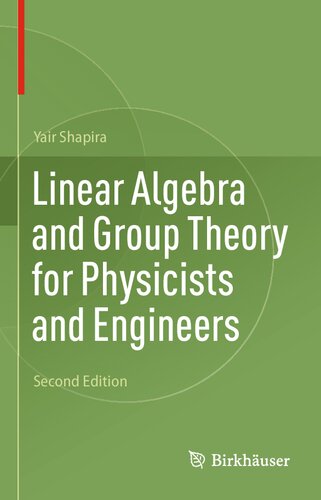

Most ebook files are in PDF format, so you can easily read them using various software such as Foxit Reader or directly on the Google Chrome browser.
Some ebook files are released by publishers in other formats such as .awz, .mobi, .epub, .fb2, etc. You may need to install specific software to read these formats on mobile/PC, such as Calibre.
Please read the tutorial at this link: https://ebookbell.com/faq
We offer FREE conversion to the popular formats you request; however, this may take some time. Therefore, right after payment, please email us, and we will try to provide the service as quickly as possible.
For some exceptional file formats or broken links (if any), please refrain from opening any disputes. Instead, email us first, and we will try to assist within a maximum of 6 hours.
EbookBell Team

5.0
18 reviewsMathematics Subject Classification: • 15-01 Introductory exposition (textbooks, tutorial papers, etc.) pertaining to linear algebra • 20-01 Introductory exposition (textbooks, tutorial papers, etc.) pertaining to measure and integration • 00A06 Mathematics for nonmathematicians (engineering, social sciences, etc.)
This textbook demonstrates the strong interconnections between linear algebra and group theory by presenting them simultaneously, a pedagogical strategy ideal for an interdisciplinary audience. Being approached together at the same time, these two topics complete one another, allowing students to attain a deeper understanding of both subjects. The opening chapters introduce linear algebra with applications to mechanics and statistics, followed by group theory with applications to projective geometry. Then, high-order finite elements are presented to design a regular mesh and assemble the stiffness and mass matrices in advanced applications in quantum chemistry and general relativity.
This text is ideal for undergraduates majoring in engineering, physics, chemistry, computer science, or applied mathematics. It is mostly self-contained―readers should only be familiar with elementary calculus. There are numerous exercises, with hints or full solutions provided. A series of roadmaps are also provided to help instructors choose the optimal teaching approach for their discipline.
The second edition has been revised and updated throughout and includes new material on the Jordan form, the Hermitian matrix and its eigenbasis, and applications in numerical relativity and electromagnetics.